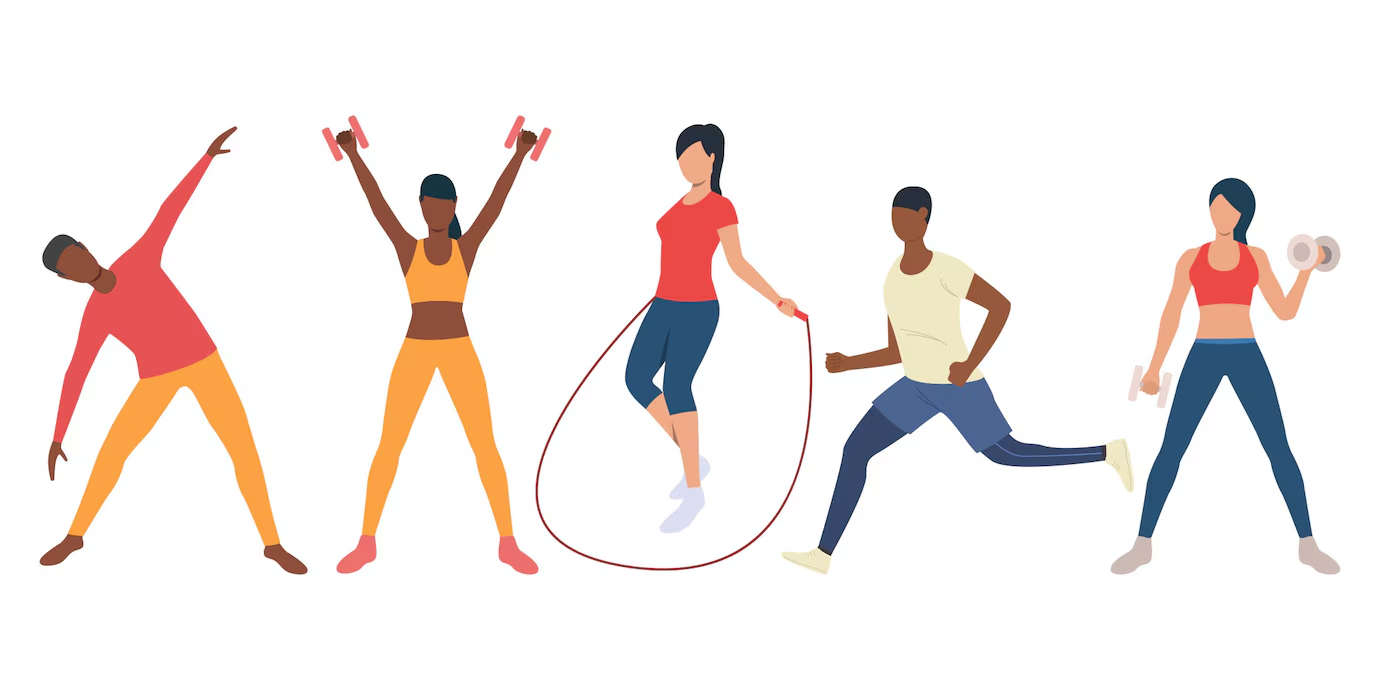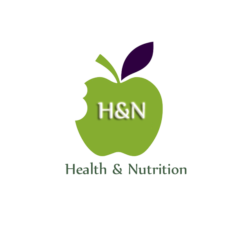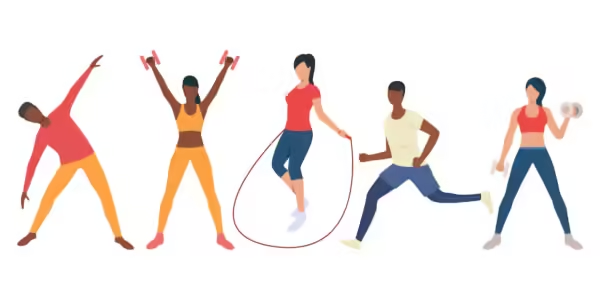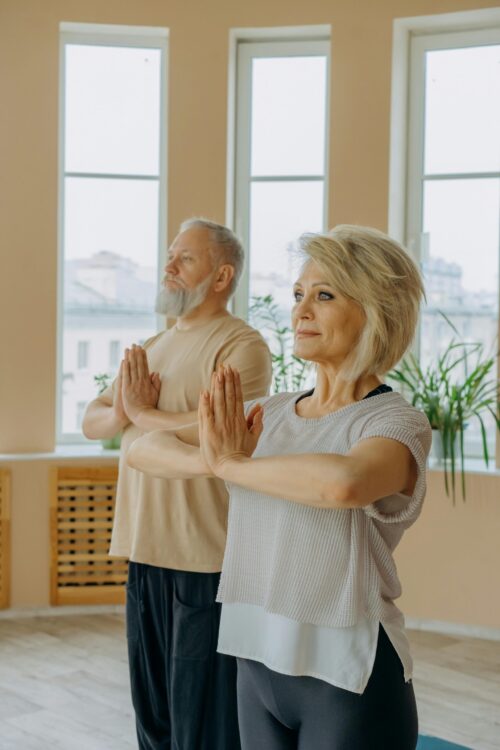Regular exercise is one of the most effective ways to improve overall health and well-being. From enhancing physical fitness to boosting mental health, exercise plays a crucial role in maintaining a balanced and healthy lifestyle. This comprehensive guide will explore the benefits of exercise, different types of workouts, and practical tips for incorporating exercise into your daily routine.
Introduction: The Power of Exercise
Exercise is a key pillar of health, with benefits extending far beyond just weight management. Engaging in regular physical activity can help prevent chronic diseases, improve mental health, increase energy levels, and even prolong life. Understanding the various types of exercise and their unique benefits can help you design a fitness regimen that aligns with your goals.
Key Points to Consider:
- The multifaceted benefits of regular exercise.
- How different types of exercise contribute to overall health.
- Strategies for creating a balanced and sustainable workout routine.
1. The Health Benefits of Regular Exercise
Exercise is not just about achieving a certain body image; it’s about enhancing your quality of life. Here are some key health benefits of regular physical activity:
Physical Health Benefits:
- Cardiovascular Health: Regular exercise strengthens the heart and improves circulation, reducing the risk of heart disease and stroke.
- Weight Management: Exercise helps burn calories and build muscle, contributing to weight loss and maintenance.
- Bone and Muscle Strength: Weight-bearing exercises like strength training enhance bone density and prevent muscle loss, crucial as we age.
- Metabolic Health: Regular activity improves insulin sensitivity, helps regulate blood sugar levels, and reduces the risk of type 2 diabetes.
Mental Health Benefits:
- Stress Reduction: Physical activity lowers cortisol levels, helping to reduce stress and anxiety.
- Improved Mood: Exercise triggers the release of endorphins, known as the “feel-good” hormones, which can alleviate symptoms of depression and boost overall mood.
- Cognitive Function: Regular exercise improves brain health, enhancing memory, focus, and cognitive function, and may reduce the risk of cognitive decline as we age.
Longevity:
- Increased Lifespan: Studies have shown that regular physical activity can extend life expectancy by reducing the risk of chronic diseases and promoting overall health.
2. Types of Exercise: Finding the Right Fit
There are various types of exercise, each offering unique benefits. Understanding these can help you tailor your workout routine to meet your specific needs and goals.
1. Aerobic Exercise:
- Benefits: Also known as cardio, aerobic exercise improves cardiovascular health, burns calories, and increases stamina.
- Examples: Running, cycling, swimming, walking, and dancing.
- Frequency: Aim for at least 150 minutes of moderate-intensity or 75 minutes of high-intensity aerobic activity per week.
2. Strength Training:
- Benefits: Builds muscle mass, strengthens bones, and improves metabolism.
- Examples: Weightlifting, resistance band exercises, bodyweight exercises (e.g., push-ups, squats).
- Frequency: Engage in strength training exercises for all major muscle groups at least two days per week.
3. Flexibility and Balance Exercises:
- Benefits: Enhances range of motion, reduces injury risk, and improves balance and stability.
- Examples: Yoga, Pilates, stretching routines, and balance-focused exercises like tai chi.
- Frequency: Incorporate flexibility and balance exercises into your routine at least two to three times a week.
4. High-Intensity Interval Training (HIIT):
- Benefits: Combines short bursts of intense activity with periods of rest, offering an efficient way to burn fat and improve cardiovascular fitness.
- Examples: Sprint intervals, circuit training, or any high-intensity activity followed by a rest period.
- Frequency: Include HIIT workouts 1-2 times per week, depending on your fitness level.
3. Creating a Balanced Workout Routine
A well-rounded exercise program should include a mix of aerobic, strength, and flexibility training. Here’s how to create a balanced routine:
1. Set Clear Goals:
- Determine what you want to achieve, whether it’s weight loss, muscle gain, improved cardiovascular health, or enhanced flexibility.
2. Plan Your Schedule:
- Weekly Exercise Plan: Dedicate certain days to different types of exercise. For example:
- Monday, Wednesday, Friday: Aerobic exercise (e.g., running or cycling).
- Tuesday, Thursday: Strength training (e.g., weightlifting or bodyweight exercises).
- Saturday: Flexibility and balance (e.g., yoga or Pilates).
- Sunday: Rest or active recovery (e.g., a light walk or gentle stretching).
3. Progress Gradually:
- Start slow, especially if you’re new to exercise or returning after a break. Gradually increase the intensity, duration, and frequency of your workouts as your fitness improves.
4. Listen to Your Body:
- Rest when needed, and avoid overtraining, which can lead to injuries and burnout. Ensure adequate recovery time, especially after intense workouts.
5. Mix It Up:
- Prevent boredom and plateaus by varying your workouts. Try new activities, change your routine, and challenge different muscle groups.
4. Overcoming Common Barriers to Exercise
Despite its benefits, many people struggle to maintain a regular exercise routine. Here are some common barriers and how to overcome them:
1. Lack of Time:
- Solution: Break your workouts into shorter sessions. Even 10-15 minutes of exercise, several times a day, can add up.
2. Lack of Motivation:
- Solution: Set small, achievable goals and reward yourself for reaching them. Joining a group class or finding a workout buddy can also boost motivation.
3. Physical Limitations:
- Solution: Consult with a healthcare provider or a fitness professional to find exercises that are safe and appropriate for your condition. Low-impact activities like swimming or cycling can be easier on the joints.
4. Boredom:
- Solution: Experiment with different types of exercise to find what you enjoy. Variety keeps your routine exciting and challenges your body in new ways.
5. Nutrition and Hydration: Supporting Your Exercise Routine
Proper nutrition and hydration are critical to maximizing the benefits of your workouts and aiding recovery.
Pre-Workout Nutrition:
- Carbohydrates: Fuel your workout with a small snack or meal rich in carbohydrates, such as a banana or oatmeal, about 30 minutes to an hour before exercise.
- Hydration: Drink water before, during, and after your workout. Staying hydrated helps maintain performance and prevent dehydration.
Post-Workout Nutrition:
- Protein: Helps repair and build muscle. Consume a protein-rich snack or meal within 30 minutes to two hours after your workout. Examples include a protein shake, Greek yogurt, or a chicken salad.
- Carbohydrates: Replenishes glycogen stores. Pair your protein with a source of carbs, like fruit or whole grains, for optimal recovery.
Hydration:
- Electrolytes: After intense workouts, especially in hot weather, consider rehydrating with an electrolyte drink to replace lost salts and minerals.
6. The Role of Rest and Recovery
Rest and recovery are as important as the exercise itself. Without proper recovery, you risk injury, burnout, and diminished results.
Rest Days:
- Importance: Scheduled rest days give your muscles time to repair and grow, reducing the risk of overtraining and injury.
- Active Recovery: On rest days, engage in light activities like walking, gentle yoga, or stretching to promote circulation and relaxation.
Sleep:
- Importance: Adequate sleep (7-9 hours per night) is crucial for muscle recovery, mental clarity, and overall health. Poor sleep can hinder workout performance and slow recovery.
Conclusion: Embracing Exercise as a Lifestyle
Exercise is a powerful tool for improving health, fitness, and longevity. By incorporating a variety of exercises into your routine and addressing common barriers, you can create a sustainable and enjoyable fitness plan that enhances your quality of life. Remember, the best exercise routine is one that you can maintain consistently and that brings you joy.
Final Tips:
- Set realistic goals and celebrate your progress.
- Stay flexible in your approach and make adjustments as needed.
- Consult with fitness professionals if you’re unsure where to start or how to progress safely.





Thank you for this well-researched and thorough article. The insights you’ve shared are incredibly valuable, and I’ll be referring back to this post often.
thanks